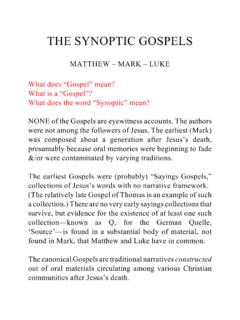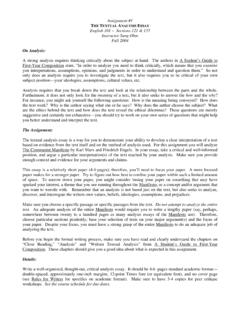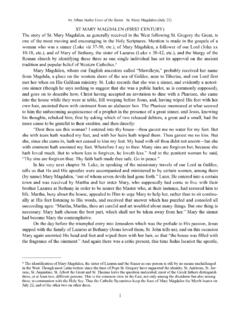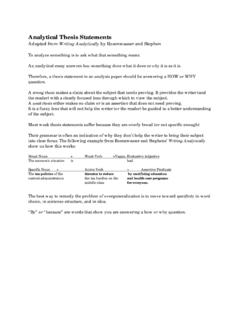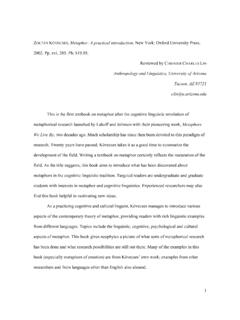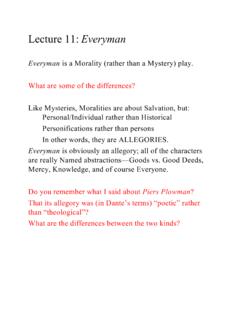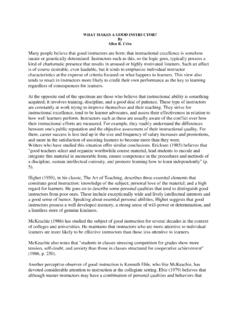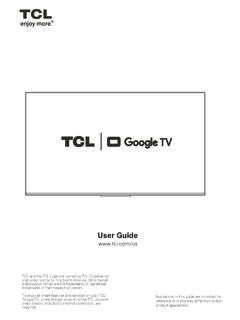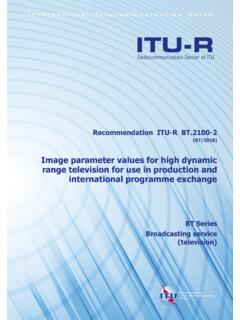Transcription of Public Goods Examples - University of Arizona
1 Public Goods : Examples The classical definition of a Public good is one that is non excludable and non rivalrous. The classic example of a Public good is a lighthouse. A lighthouse is: Non excludable because it s not possible to exclude some ships from enjoying the benefits of the lighthouse (for example, excluding ships that haven t paid anything toward the cost of the lighthouse) while at the same time providing the benefits to other ships; and Non rivalrous because if the lighthouse s benefits are already being provided to some ships, it costs nothing for additional ships to enjoy the benefits as well. This is not like a rivalrous good, where providing a greater amount of the good to someone requires either that more of the good be produced or else that less of it be provided to others , where there is a very real opportunity cost of providing more of the good to some people.
2 Some other Examples of Public Goods : Radio and television: Today no one who broadcasts a radio or TV program over the air excludes anyone from receiving the broadcast, and the cost of the broadcast is unaffected by the number of people who actually tune in to receive it (it s non rivalrous). In the early decades of broadcasting , exclusion was not technologically possible; but technology to scramble and de scramble TV signals was invented so that broadcasters could charge a fee and exclude non payers. Scrambling technology has been superseded by cable and satellite transmission, in which exclusion is possible. But while it s now technologically possible to produce a TV or radio signal from which non payers are excluded (so that it s not a Public good), it s important to note that because TV and radio signals are non rivalrous, they are technologically Public Goods : it s technologically possible to provide them without exclusion.
3 Clean air; pollution abatement: The quality of the air we breathe in a particular neighborhood is both non excludable and non rivalrous. Pollution abatement is therefore a Public good. The Examples above, together with our in class Examples of the water level in a lake and a mosquito abatement program, make it clear that the essential characteristic of a Public good is that it s not possible to vary the level of the good ( , its quantity, its quality, etc.) across people. Changing the level for one changes the level for all. In other words, it s non rivalrous. If a non rivalrous good is inherently non excludable if exclusion is not possible, as with the lake water level or with TV in the old days then what we have is a Public good.
4 But if exclusion is technologically possible for a non rivalrous good, as with TV today, then the good is potentially a Public good, but it may not be manifested as a Public good in practice. A highway system; a mass transit system; a school system: In each of these Examples , everyone who has access to the system benefits (or suffers) from the same system. The system s characteristics for example, the quality of the teaching in a school, or the time it takes the subway to travel from Brooklyn to the Bronx, or the number of potholes in the streets these are the same for all users. However, in each of these cases it s at least possible to exclude people from access, and therefore to charge a fee or a toll for access.
5 And these Public Goods are also all subject to congestion when too many people use them, so that the quality of the good may be affected by adding more users. Additional Examples of Public Goods that are subject to congestion are a bridge, a Public swimming pool, and an airport. The characteristics of a home: The size of the TV, the color of the living room, the size of the swimming pool and the temperature of the pool s water, the size of the refrigerator, the speed of the internet connection these are all Public Goods to the residents of the home. Whatever is chosen for one is chosen for all. The thermostat setting in a room: The temperature in our seminar room, 401KK or in a shared office, or in a home is the same temperature for all who occupy the room.
6 We can t make it warm for some and cool for others. Police protection; national defense: National defense can t be provided at different levels to different citizens. Similarly for the level of police protection in a community, but police protection (unlike national defense) is subject to congestion: a larger population requires a larger police force to provide the same level of protection. Books: Consider the information in a book. After the information has been produced ( , once the book has been written), it needn t be written again in order for additional people to read it. So in this respect, a book is non rivalrous. But until recently there was still a significant cost to making the book available to additional readers: additional copies of the book had to be printed, bound, and delivered, and all these steps required resources (a marginal cost) for each additional copy of the book.
7 So the Public good character of a book (the non rivalrous information it contained, , the writing) was outweighed by its private good character, the marginal cost of producing each additional copy of the physical book. But this has completely changed: today it s possible, once a book has been written, to distribute unlimited copies electronically at essentially zero marginal cost. So today a book is a Public good , like a TV broadcast, a book is technologically a Public good, but to the extent that exclusion is possible, in practice the book may or may not be a Public good in any particular case. Information; content : Everything we said in the preceding paragraph about books is equally true for recorded music, movies, newspapers, magazines for what s today often called content.
8 In the not very distant past, it was costly to manufacture and distribute additional copies of any particular content, such as a CD or videotape or magazine. But today, once the fixed cost of creating the content has been incurred, the marginal cost of making that content (information) available to additional people is essentially zero. Some decisions by a corporation or a partnership: Alternative strategies or investments by a firm typically have different time paths for their costs and returns, and often have different state contingent outcomes. If the partners or shareholders have different time preferences or different risk preferences, the firm s decision can t generally yield outcomes that differ for the various owners the outcomes are necessarily the same for all the owners, so the decision is a Public good from the perspective of the owners.
9
